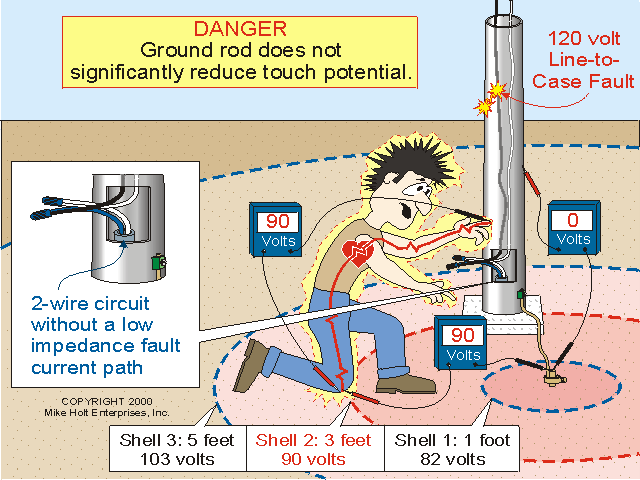bobby ocampo
Senior Member
don_resqcapt19 said:On an HRG or ungrounded system it will do that, but it won't do that on a solidly grounded system.
It will have the same effect in solidly grounded specially if the fault is an ARCING GROUND FAULT. This fault is very low most of the time lower that the ampere trip rating of the OCPD. Even with EGC the OCPD may not trip.
This is the reason for the requirement of a ground fault protection in Article 240 for feeder of 1000amps or more and 150 volts to ground or more on solidly groundd system.
don_resqcapt19 said:The type of fault does not change anything. There will still be a voltage between the point of the fault and the earth.
The voltage drop in the grounding conductor is very low because requirement is to use a low impedance path to earth during ARCING GROUND FAULT. Current is lower than the ampere trip rating of the OCPD and computing for the voltage drop will be very low V=IR. Resistance is very small per 10000 feet. Current is very low, lower than the ampere trip rating of the OCPD on an ARCING GROUND FAULT.
Electric shock will come from the energized metal piece not connected to ground similar with the UNGROUNDED AND HRG and not on the ARCING FAULT CURRENT because this current is very low.


